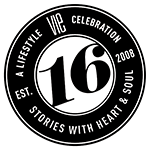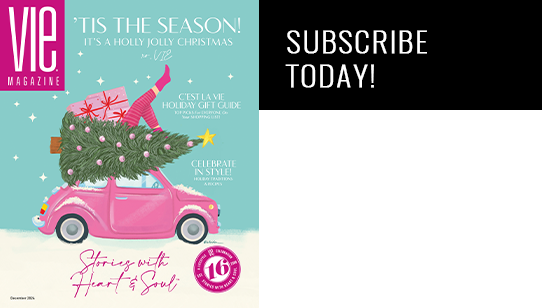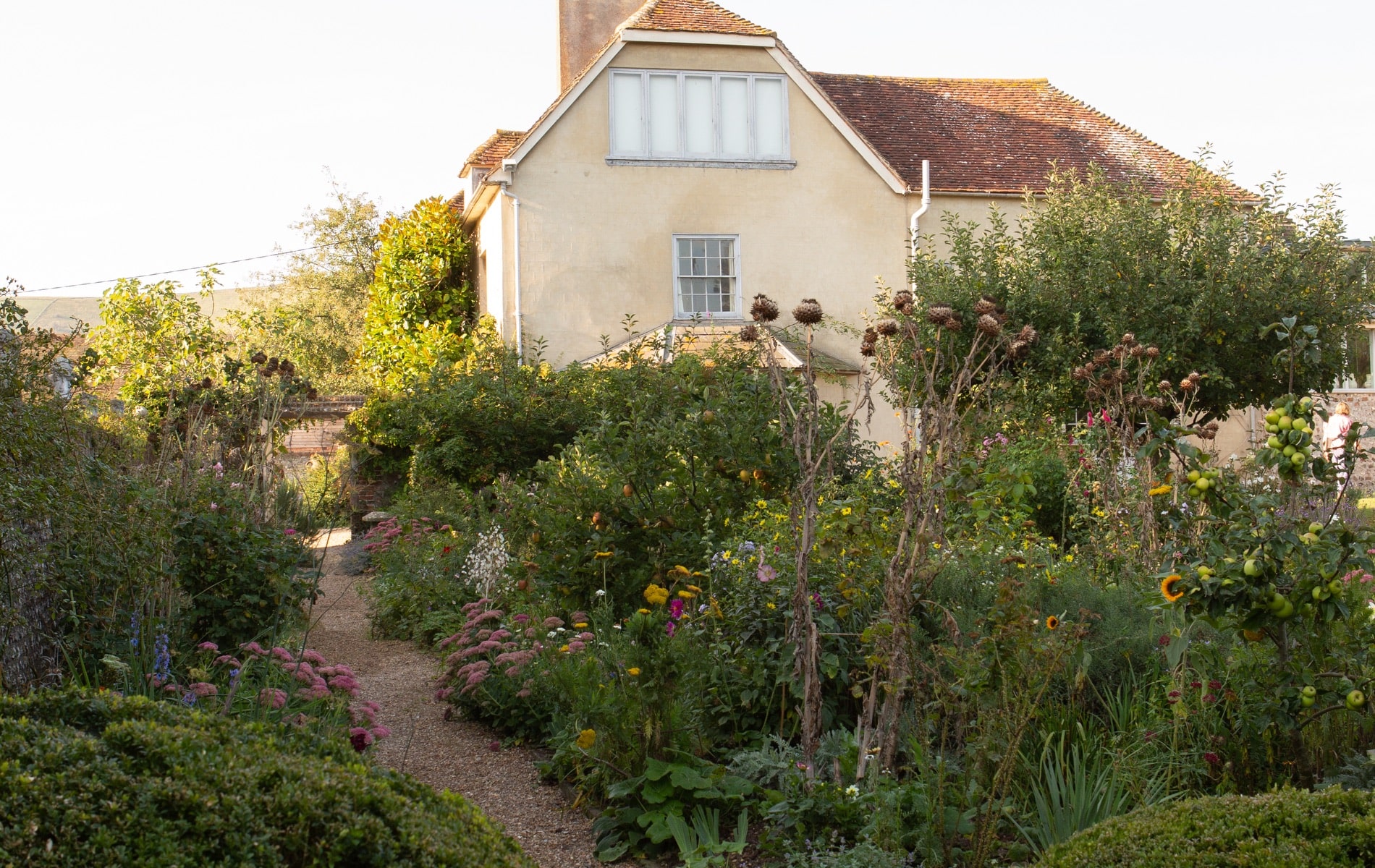
VIE_Magazine_MAY22_article_HON_HERO-min
The Famed Charleston Farmhouse in East Sussex
Art and Literary Festivals Abound
By Anthea Gerrie | Photography by Lee Robbins
It was a rundown, cold-water cottage in the middle of nowhere—the last place you’d expect to find a socialite from London entertaining her friends. But Vanessa Bell was an artist, like her friend and lover Duncan Grant, and over much of the twentieth century, the color-obsessed duo made Charleston farmhouse the most vibrantly decorated home in England.
“Whenever Duncan and Vanessa entered a house, there was a fifty-fifty chance they would cover the walls with decorations,” commented Vanessa’s son Quentin drily in his history of the country home of the Bloomsbury Set. He would go on to enhance this home replete with painted doors, panels, fire screens, and furniture with his own ceramics and glass, making the house that today draws more than fifty thousand visitors a year richer and richer with the patina of time.
Virginia Woolf, the most famous member of the Set, first saw Charleston’s possibilities in 1916 and urged Vanessa, her older sister, to take on the Sussex house close to England’s southern coast. “It has a charming garden . . . all now rather run wild, but you could make it lovely,” she wrote, noting that the pluses of the six-bedroom house on three floors included a space suitable for a studio. But there were minuses, too—“The wallpapers are awful!” she warned.
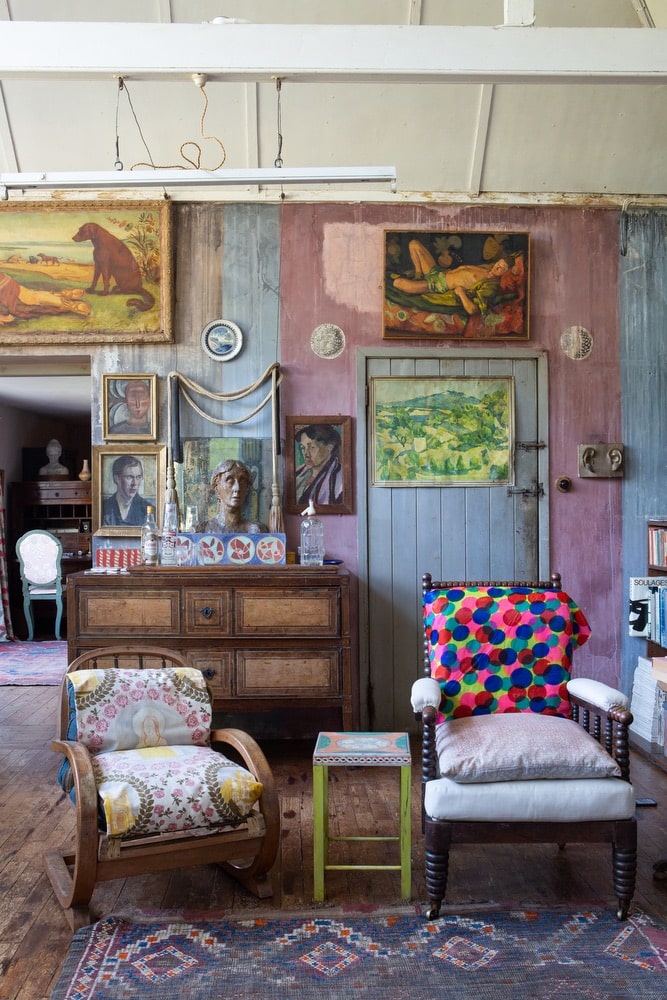
The adventure to renovate, redecorate, and celebrate life indoors and out started in 1916. Duncan, already one of Britain’s most famous contemporary artists, and his partner David Garnett needed, as conscientious objectors, to find farming jobs to avoid being conscripted during World War I. Vanessa took the house, moved in with the duo, and love bloomed between her and Duncan, despite his homosexuality; their daughter, Angelica, was born in the house on Christmas Day 1918. In the course of time, the trio would be joined by Vanessa’s husband, Clive Bell, artist and critic Roger Fry, who made his own creative contribution and commercialized some of the artists’ designs, and others, including Quentin, his brother Julian, and sundry Bloomsbury Set members. It was a free-living, free-love commune, but bohemian as their bedroom habits may have been, everyone conformed to prewar social norms by sitting down for meals together and changing for dinner.
It thus seems fitting that today’s house tours start in the kitchen, manned for more than half a century by cook Grace Higgens, who was touchingly commemorated after her death in the 1980s by Quentin Bell. He enhanced what was a simpler room back in the day by hand-painting tiles with a plaque paying tribute to her years of service.
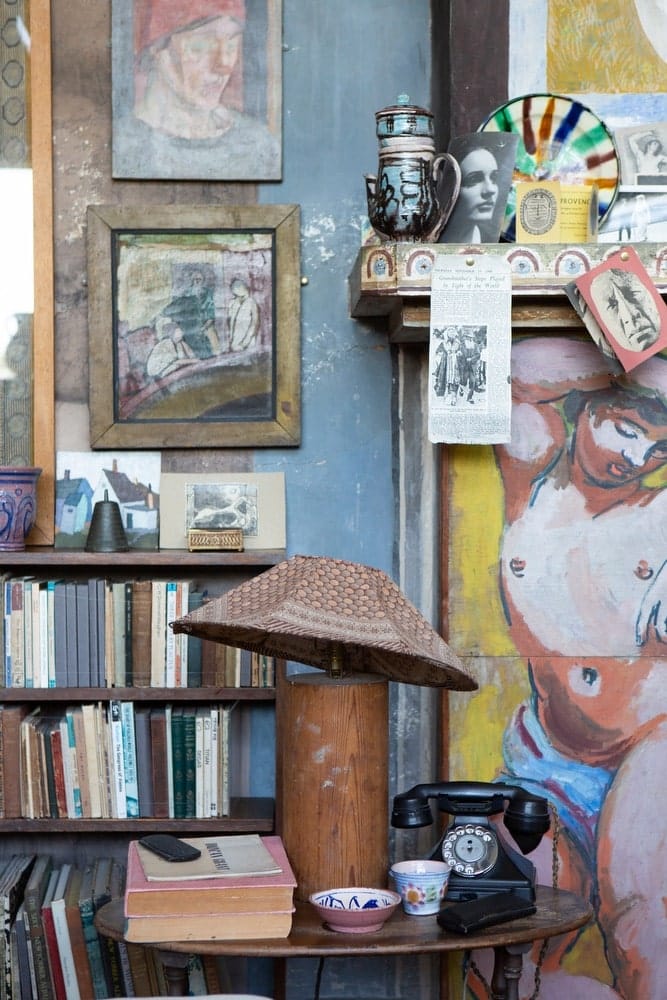
Grace delivered food through a secret curtain—painted by Duncan, like so many others—into the dining room, one of the most fabulous rooms in the house. The huge round table, decorated by Vanessa with geometric motifs in dusty pastels, might be the star, but it’s the striking walls that make the room so special. Once whitewashed, like the rest of the cottage, to remove traces of that “awful wallpaper” Virginia so despised, they were transformed by Duncan and Quentin in 1939, when World War II was announced, with a black background stamped with stenciled blocks and hand-painted chevrons. A charming recent addition is the ceramic light fixture resembling an upside-down colander suspended over the table with necklaces of glass beads; Quentin made it, and one of his art-college pupils matched it with another for the kitchen.
Before dinner, everyone gathered in the Garden Room, where visitors now encounter the first of several amazingly decorated fireplaces—some of Charleston’s most enchanting and unique features. This one is eclipsed only by the centerpiece of Duncan’s studio-cum-sitting room, sensibly the final room visitors get to experience, as it would be an impossible act to follow. An extension designed by Roger Fry on the site of an old chicken run, its dramatic, hand-painted fireplace wall runs from floor to ceiling, a pair of nudes standing sentinel beneath a mantelpiece crammed with fascinating memorabilia.
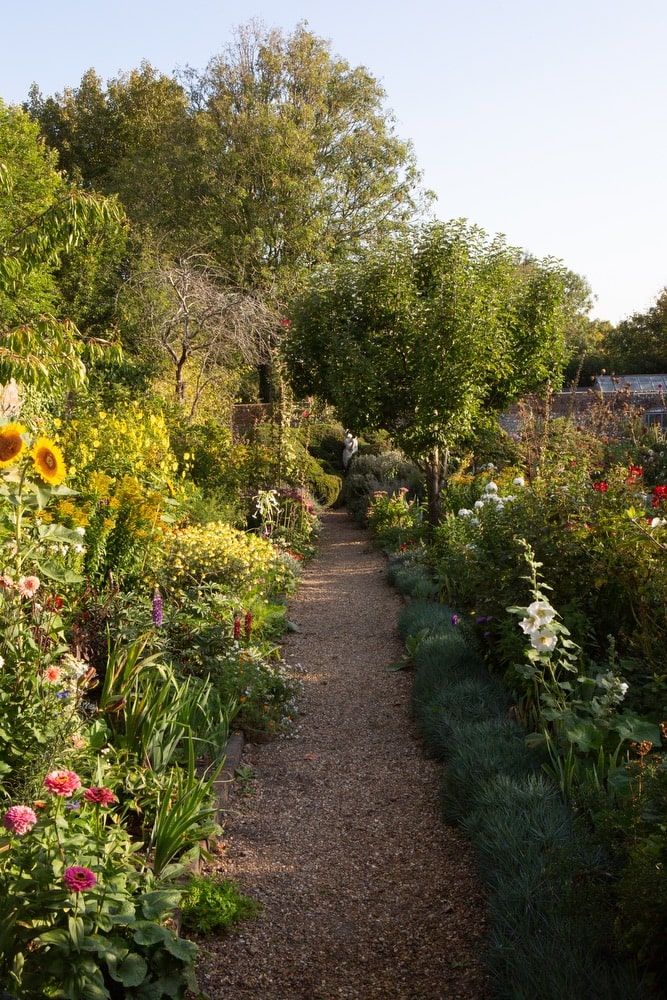
Unlike conventional homes, where a wow factor is less often found in bedrooms than entertaining spaces, Charleston continues to delight the eye with flowers, animals, and other painted details as visitors progress upstairs. Before she turned it over to her husband for a library when he moved down from London in 1939, Vanessa slept in a bedroom where Duncan, by then her lover of more than twenty years, painted a cockerel over her window to wake her up in the morning and a portrait of Henry, her beloved pet lurcher, beneath it to guard her as she slept.
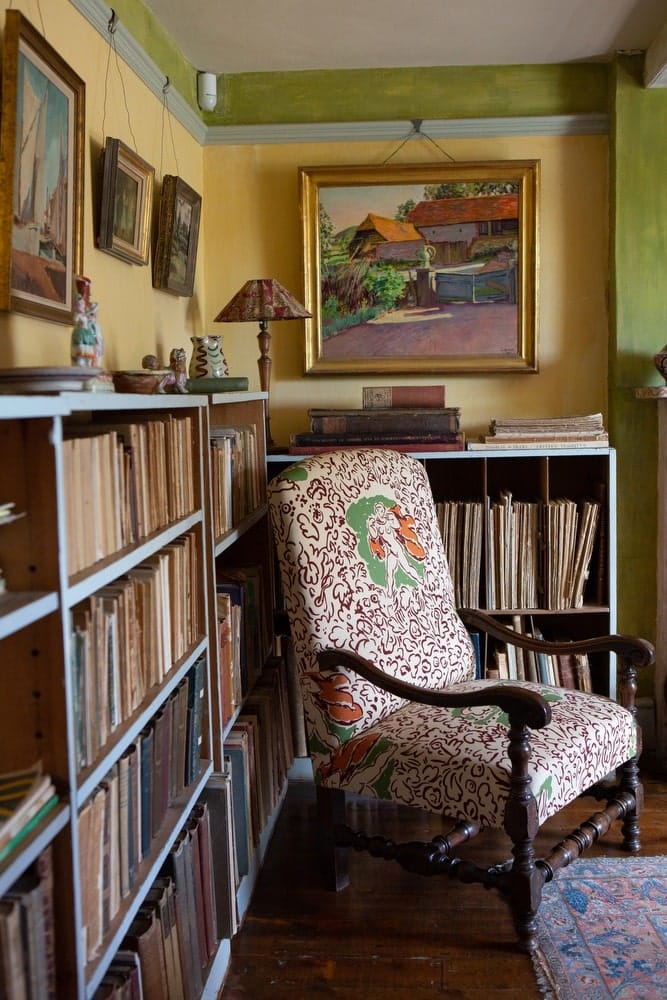
It’s a more intimate room than Duncan’s spacious, jaw-dropping bedroom, where he slept for more than sixty years until his death in 1978. It’s not just the hand-painted doors, lamp base, and exquisite upholstery patterns he designed for the chaise longue beneath the window but the enchantment of an adjacent dressing room that catches the light in a beguiling, ever-changing shift as sunlight crosses it. No space was too small to be embellished with a painting by Duncan or Vanessa, and the giant fish with which he decorated the console beneath the window is not to be missed on a visit.
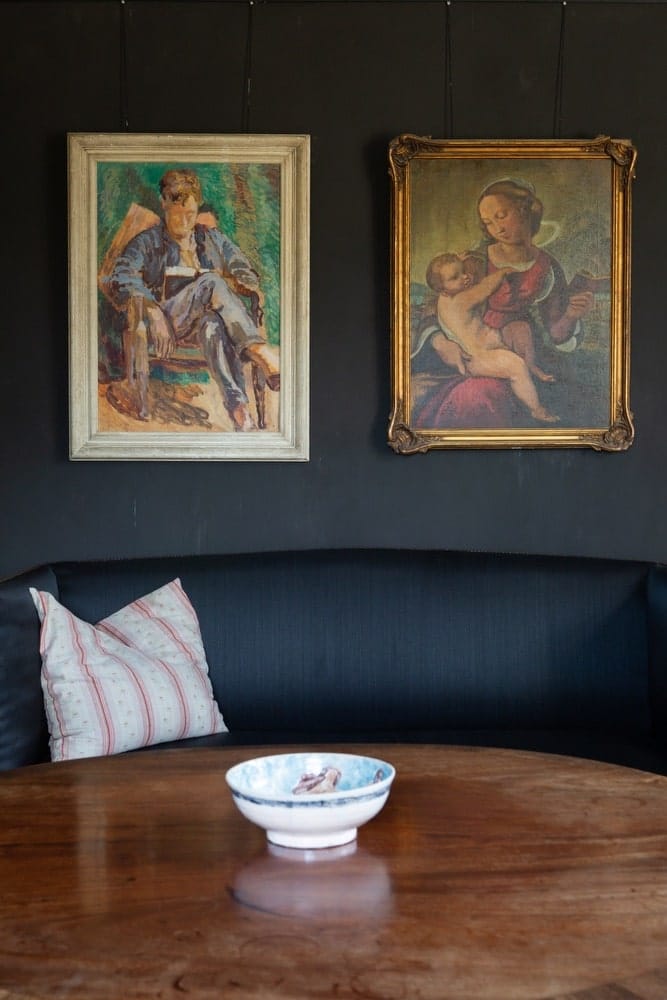
An extra treat for visitors this summer is access to Vanessa’s studio on the top floor of the house, which is not normally open to the public. Typical for its hand-painted doors in even the most private of working spaces, the studio she last stepped into sixty-one years ago has been made magical with angled roof mirrors installed by Langlands & Bell. Like Vanessa and Duncan, this contemporary artist couple shares an obsession with enhancing living spaces and making art together. Near Heaven, an apt name for this exceptional installation inspired by Angelica’s words to her mother about the importance of the space, makes a visit to the magical Charleston farmhouse and its equally incredible garden de rigueur between now and September.
— V —
Visit Charleston.org.uk to learn more or plan a visit.
If you go…
New galleries installed in converted farm buildings have enhanced Charleston over the past few years by throwing the spotlight on contemporary artists, including those like Langlands & Bell, who feel a call to respond to this utopian house of artists trying new ways of living. Apart from Near Heaven, the duo’s architectural models, Ideas of Utopia, are being shown in one gallery. In the other, they have curated Absent Artists, an enchanting display of pictures of empty studios, including contributions by David Hockney, Jim Dine, Saul Steinberg, and Annie Liebovitz.
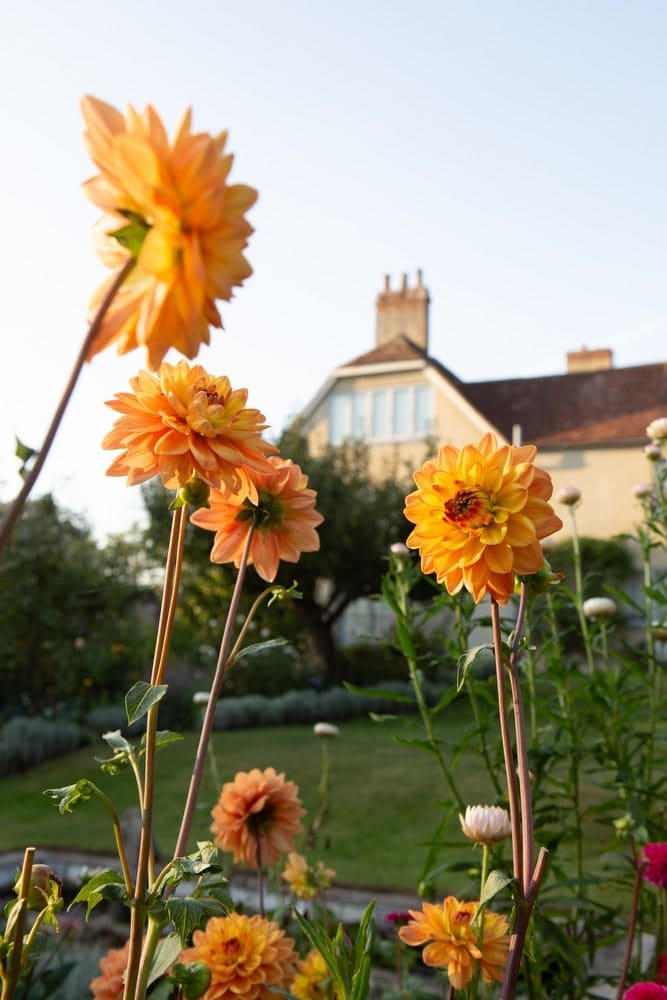
Another highlight of Charleston is the annual literary festival, which established links with the celebration of the same name in Charleston, South Carolina, some years ago. It’s a highlight every May, but the house and garden are worth visiting throughout the year.
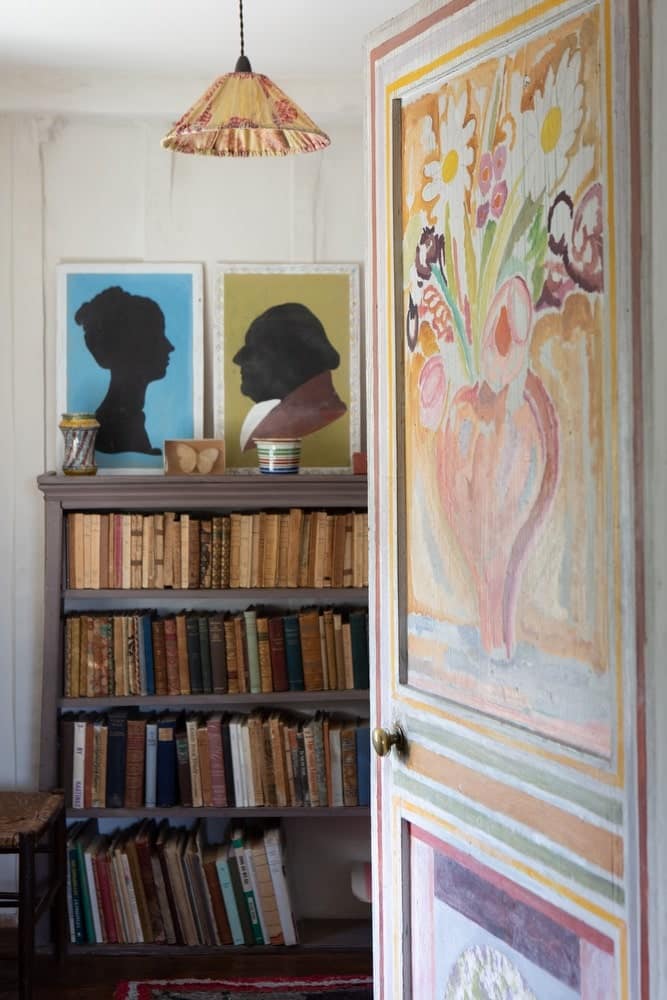
Don’t forget the shop; one of the great joys of Charleston is that some of the fabrics designed by Vanessa Bell and Duncan Grant can still be bought by the meter. It’s an enduring legacy of Roger Fry’s Omega Workshop, which employed the duo to create hand-painted textiles and furniture for the well-heeled residents of London’s Bloomsbury and beyond.
Share This Story!
KEEP UP WITH THE LATEST STORIES FROM VIE
